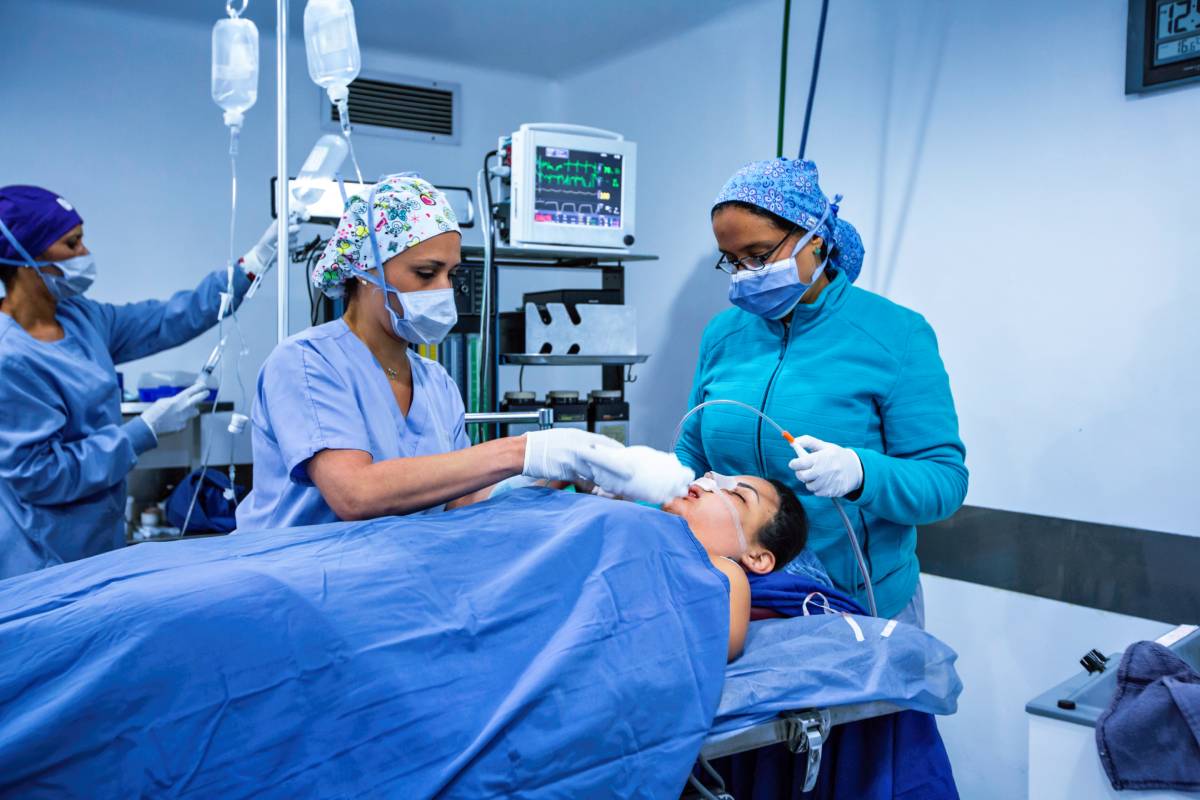Retrograde intubation is a lesser known but valuable technique used to secure an airway when standard intubation methods, such as direct laryngoscopy or video laryngoscopy, are difficult or impossible. Retrograde intubation has remained a reliable alternative, especially in scenarios where airway access is compromised or visualizing the vocal cords is not feasible.
Retrograde intubation is a procedure that involves threading a guidewire through the cricothyroid membrane (a membrane located between the thyroid and cricoid cartilage in the neck) and advancing it upwards into the oropharynx, where it is retrieved via the mouth or nose. Once the guidewire is in place, an endotracheal tube is passed over the wire, allowing for successful tracheal intubation. This method is most commonly performed when other techniques fail or are deemed too risky due to anatomical or pathological airway conditions 1.
Retrograde intubation is often used as a backup technique when direct or indirect visualization of the airway does not succeed with other intubation techniques2,3. First, retrograde intubation is particularly useful in patients with difficult airways, such as those with restricted mouth opening (trismus), severe facial trauma, or neck immobility. Second, in cases where traditional intubation has failed due to an inability to visualize the vocal cords or anatomical abnormalities like swelling or tumor masses, retrograde intubation offers an alternative route to securing the airway. Third, when the head and neck position cannot be manipulated, as in patients with cervical spine injuries, retrograde intubation avoids the need for hyperextension or manipulation of the airway. Finally, retrograde intubation is occasionally employed in emergency settings, especially if other methods are unavailable or impractical in a time-sensitive scenario.
The retrograde intubation procedure involves several key steps 4,5. For preparation, the patient is positioned supine, and the cricothyroid membrane is identified using palpation. Local anesthesia is often applied to minimize discomfort during needle insertion. A small-gauge needle (typically a 14-16 gauge) is inserted through the cricothyroid membrane into the trachea. Air aspiration confirms the correct placement in the trachea. A flexible guidewire is then passed through the needle and directed upwards toward the mouth or nose. It may be retrieved using forceps or by simply guiding it out of the oral or nasal cavity. Once the guidewire is in place, an endotracheal tube (ETT) is threaded over the guidewire and advanced into the trachea. The guidewire is then removed, and the ETT is secured to maintain the airway.
Retrograde intubation has both advantages and limitations 1,6. By using the cricothyroid membrane as an entry point, retrograde intubation can minimize trauma to the oral cavity and upper airway, especially in cases where laryngoscopy might cause damage. In addition, since it does not rely on direct visualization of the vocal cords, retrograde intubation is valuable when the airway is obscured by blood, swelling, or anatomical anomalies. However, the procedure involves puncturing the cricothyroid membrane, which can lead to complications. Additionally, compared to other intubation techniques, retrograde intubation can take longer, especially in the hands of less-experienced clinicians.
References
1. Normand, K. C. & Aucoin, A. P. Retrograde Intubation. Difficult Airw. 109–116 (2013). doi:10.1093/MED/9780199794416.003.0010
2. Gill, M., Madden, M. J. & Green, S. M. Retrograde endotracheal intubation: An investigation of indications, complications, and patient outcomes. Am. J. Emerg. Med. (2005). doi:10.1016/j.ajem.2004.03.002
3. Kishan Rao, B., Murthy, S. G. K., Vikramaditya, C. & Jagadeesh, V. Retrograde intubation: An alternative in difficult airway management in the absence of a fiberoptic laryngoscope. Indian Journal of Anaesthesia (2010). doi:10.4103/0019-5049.72662
4. Vadepally, A. K., Sinha, R. & Kumar, A. V. S. S. S. Retrograde intubation through nasal route in patients with limited mouth opening undergoing oral and maxillofacial surgery. J. Oral Biol. Craniofacial Res. (2018). doi:10.1016/j.jobcr.2017.08.002
5. Retrograde intubation. Available at: https://airwaymanagement.dk/index.php?option=com_content&view=article&id=54&Itemid=417.
6. Dhara, S. S. Retrograde tracheal intubation. Anaesthesia 64, 1094–1104 (2009).doi: 10.1111/j.1365-2044.2009.06054.x


